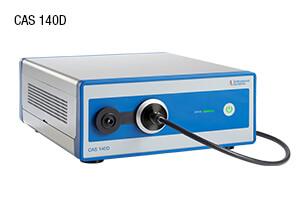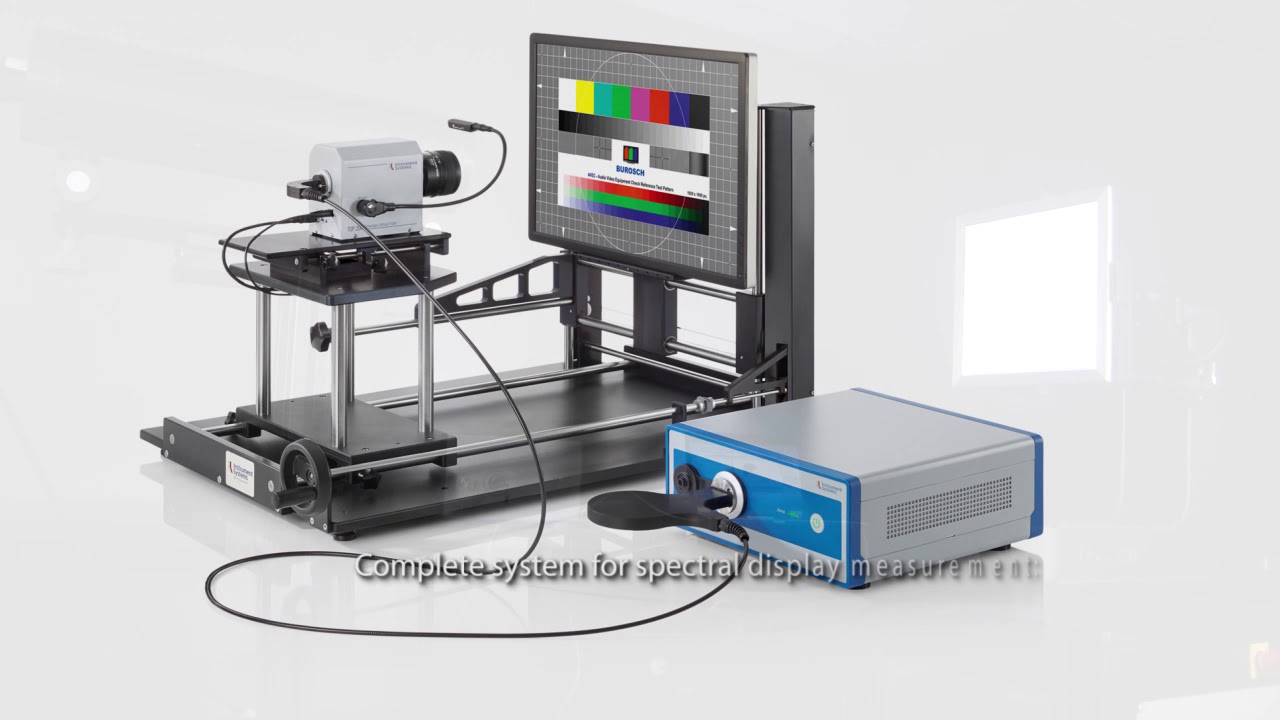CAS 140D Array Spectroradiometer
Click Here to Watch Video
The CAS 140D represents the fourth generation of the worldwide extremely successful series of high-end array spectroradiometers from Instrument Systems. It combines all advantages of the CAS 140CT in terms of measurement accuracy and reliability with sustainable technical optimization for increased repeatability and stability in every environment.
As a result, it offers even more versatile applications – from the reference instrument in national calibration laboratories to continuous production. A wide range of accessories complement the spectroradiometer to create a complete system for a wide range of spectroradiometric and photometric measurement tasks. Thanks to the modern housing and improved optical and mechanical design, the instrument is even more functional, but smaller and simpler to integrate into existing measurement environments.
Existing Customer?
If you're looking for service support or help with calibration then complete a service request form and we'll get right back to you
Features
- Eligible ISO 17025 Certification
- High-end CCD detector, cooled and back-illuminated
- Down to 4 ms integration time
- Spectrograph with minimum stray light and enhanced throughput
- Integrated density filter wheel
- USB, PCIe or Ethernet interface
- “Plug & play” accessory identification
Specifications
| Model | UV/VIS | UV/VIS/NIR | VIS | VIS/NIR |
|---|---|---|---|---|
| Spectral range | 200 – 800 nm | 220 – 1020 / 300 – 1100 nm |
360 – 830 nm | 380 – 1040 nm |
| Detector | Back-thinned CCD | |||
| Number of pixels (vertically binned) | 1024 x 128 | |||
| Spectral resolution1 | 2.7 nm | 3.7 nm | 2.2 nm | 3.0 nm |
| Datapoint interval | 0.6 nm | 0.8 nm | 0.5 nm | 0.65 nm |
| Wavelength accuracy | < ±0.3 nm | |||
| Integration time | 4 msec – 65 sec | |||
| Shortest duration SOT to EOT2 | 6 ms | |||
| Sensor dynamic range3 | 37,000:1 | |||
| Non-Linearity | ±0.5 % | |||
| Cooling | -10 °C | |||
| Stray light | ||||
| Broadband for Illuminant A4 | 5·10-4 | |||
| With laser5 | 5·10-5 | |||
| Sensitivity | ||||
| Irradiance6 [W/m2 nm] | 5·10-8 – 500 | 2·10-8 – 200 | 3·10-8 – 300 | 2·10-8 – 200 |
| Measurement uncertainty7 (dom. wavelength / color coordinates) | ||||
| Accuracy | ±0.5 nm / ±0.0015 | ±0.5 nm / ±0.002 | ±0.5 nm / ±0.0015 | ±0.5 nm / ±0.002 |
| Measurement uncertainty7 (irradiance and illuminance) | ||||
| Accuracy | ±3.5 % | |||
| Spectrophotometry | ||||
| Baseline noise8 | ±0.4 % | |||
| Transmission measuring accuracy9 | ±0.5 % T | |||
| Baseline drift10 | 0.15 %/h | |||
| Spectrograph | ||||
| Focal length, grating | Approx. 120 mm f/3.5 / plane ruled grating | |||
| Slit | 50 μm, 100 μm or 250 μm | |||
| Filter wheel / Shutter | Max. 7 slots for density filters OD 0.5 to OD 4; UV/VIS and UV/VIS/NIR with UV density filters; position monitoring with encoder | |||
| Electrical data | ||||
| AD converter | 24 Bit resolution, Chip 16 Bit | |||
| PC interface | USB 2.0, PCIe, Ethernet | |||
| Triggering | 1 TTL input with ascending slope; 2 software-controlled TTL outputs; 1 TTL output with flash pulse |
|||
| Other | ||||
| Dimensions (H, W, D) | 144 x 341 x 359 mm3 | |||
| Power supply | Wide-range input 100 – 240 VAC 50/60 Hz | |||
| Power consumption | Max. 70 VA | |||
| Ambient temperature | 15 – 35 °C; relative humidity 0 – 70 % max., non-condensing | |||
| Weight | Approx. 9 kg | |||
| Valid standards | In conformity with EN 60721-4-7 Class 7M2, EN 60721-4-7 Class 2M2, EN 61326:2004-05 and EN 61010-2002-08 |
|||
1 Applies to a 100 μm slit.
2 With USB interface.
3 For a single acquisition with 4 ms integration time.
4 Measured with edge filter OG455 at 400 nm, relative to peak intensity of unweighted spectral data.
5 Measured 150 nm to left of the peak wavelength, relative to peak intensity of unweighted spectral data.
6 Measured with optical probe EOP-120 and OFG-414 fiber bundle at 600 nm and signal/noise ratio of 10:1, without averaging.
7 Immediately after calibration relative to PTB traceable calibration standard. Refers to twofold standard deviation. Applies to the measurement and ambient conditions during calibration (e.g. without density filter, good signal level etc.).
8 With shortest integration time, without averaging and with 50% modulation. This value improves with appropriate averaging (e.g. 9x averaging results in a 3x reduction of noise).
9 Applies to optimum spectral range; with 10% transmission and immediately after recording an averaged baseline.
10 Typical value. Applies with LS100-130 light source after 1 hour warm-up.
CAS 140D Video Preview – Konica Minolta Sensing Americas
Konica Minolta Sensing offers the CAS 140 series Spectroradiometers from Instrument Systems. Various test configurations cover the entire range of light measurement, from UV to infrared. With flexible fiber optic probes, measurement adapters, and comprehensive software, the CAS 140 is a complete turnkey solution for the lighting industry. Watch video and learn more.



